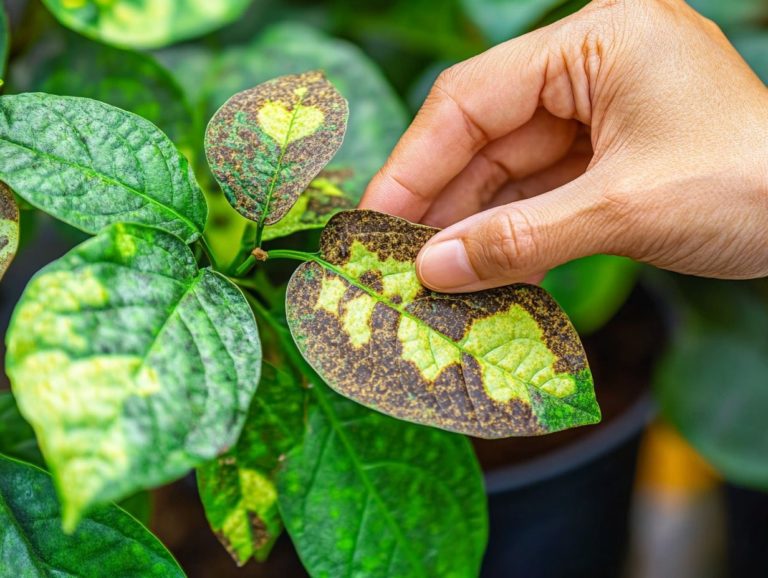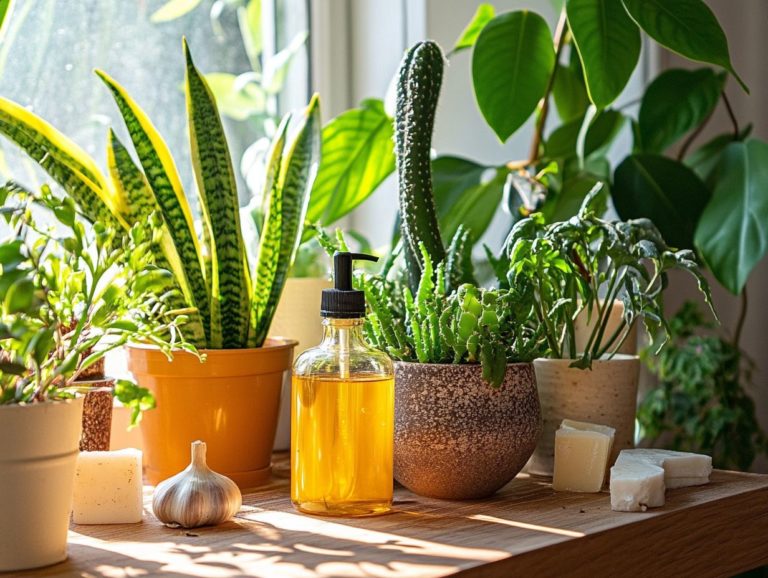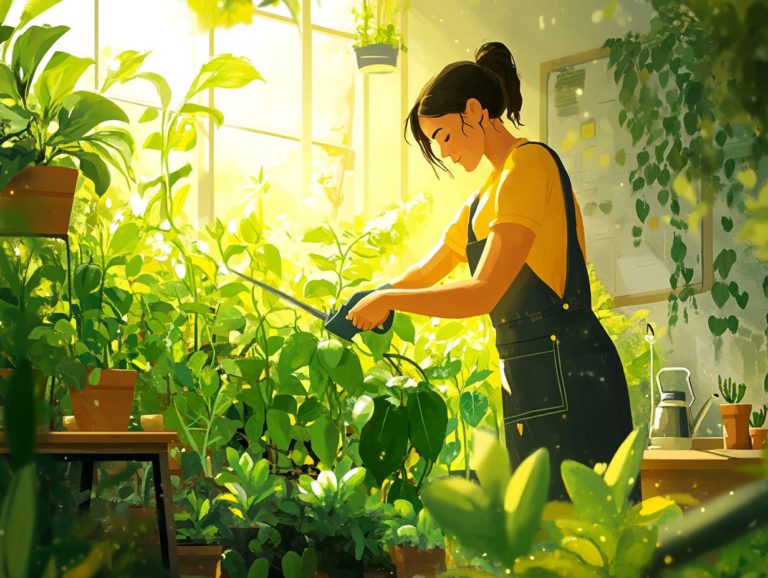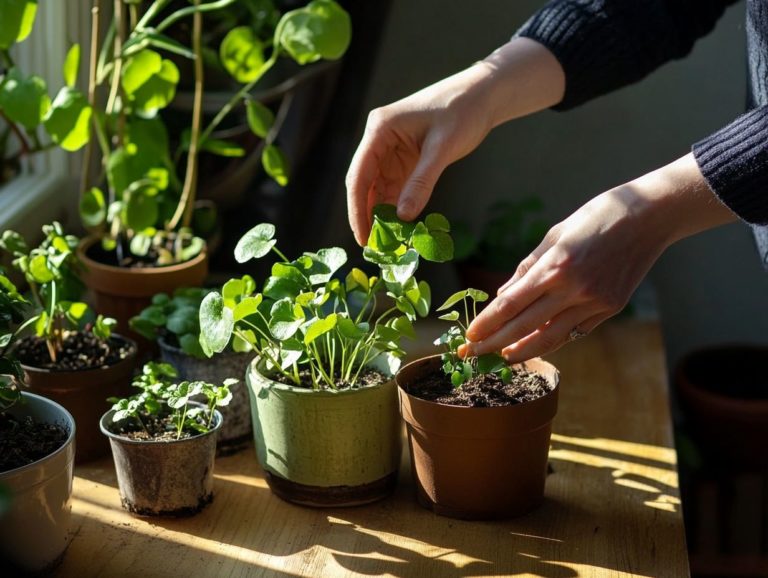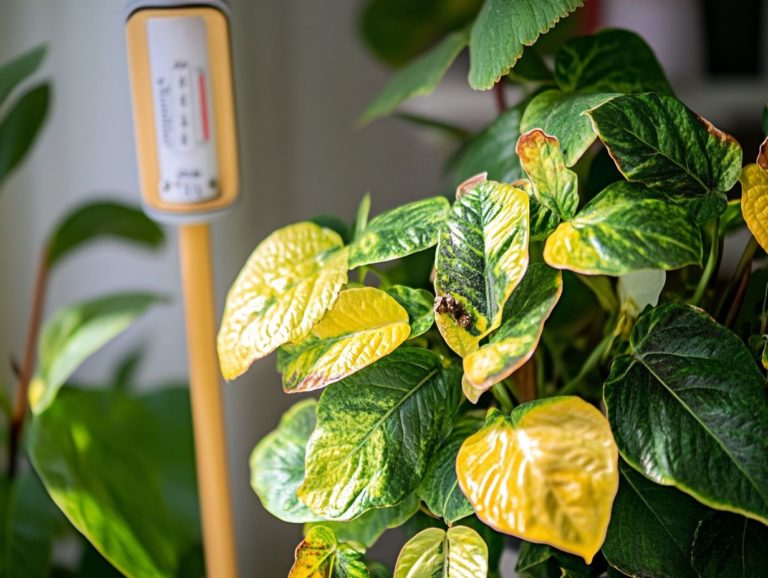5 Indoor Plants That Attract Beneficial Insects
Are you ready to elevate your indoor environment into a vibrant ecosystem of indoor plants that beautify your home and positively contribute to the planet?
Explore five exceptional pest-resistant houseplants basil, dill, marigolds, lavender, and sunflowers that attract beneficial insects. These botanical wonders can enrich your indoor spaces, promote biodiversity, and provide benefits that go beyond mere aesthetics.
Ready to bust some myths about indoor gardening? Let s get started with tips for nurturing a flourishing indoor garden. Prepare to cultivate a greener, more inviting sanctuary within your home!
Contents
- Key Takeaways:
- 1. Basil
- 2. Dill
- 3. Marigolds
- 4. Lavender
- 5. Sunflowers
- What Are Beneficial Insects and Why Are They Important?
- Frequently Asked Questions
- 1. What are some indoor plants that can attract beneficial insects?
- 2. What type of beneficial insects are attracted to these indoor plants?
- 3. How do these indoor plants attract beneficial insects?
- 4. Can these indoor plants also repel harmful insects?
- 5. Do these indoor plants require any special care to attract beneficial insects?
- 6. Are there any other benefits to having these indoor plants in my home?
Key Takeaways:
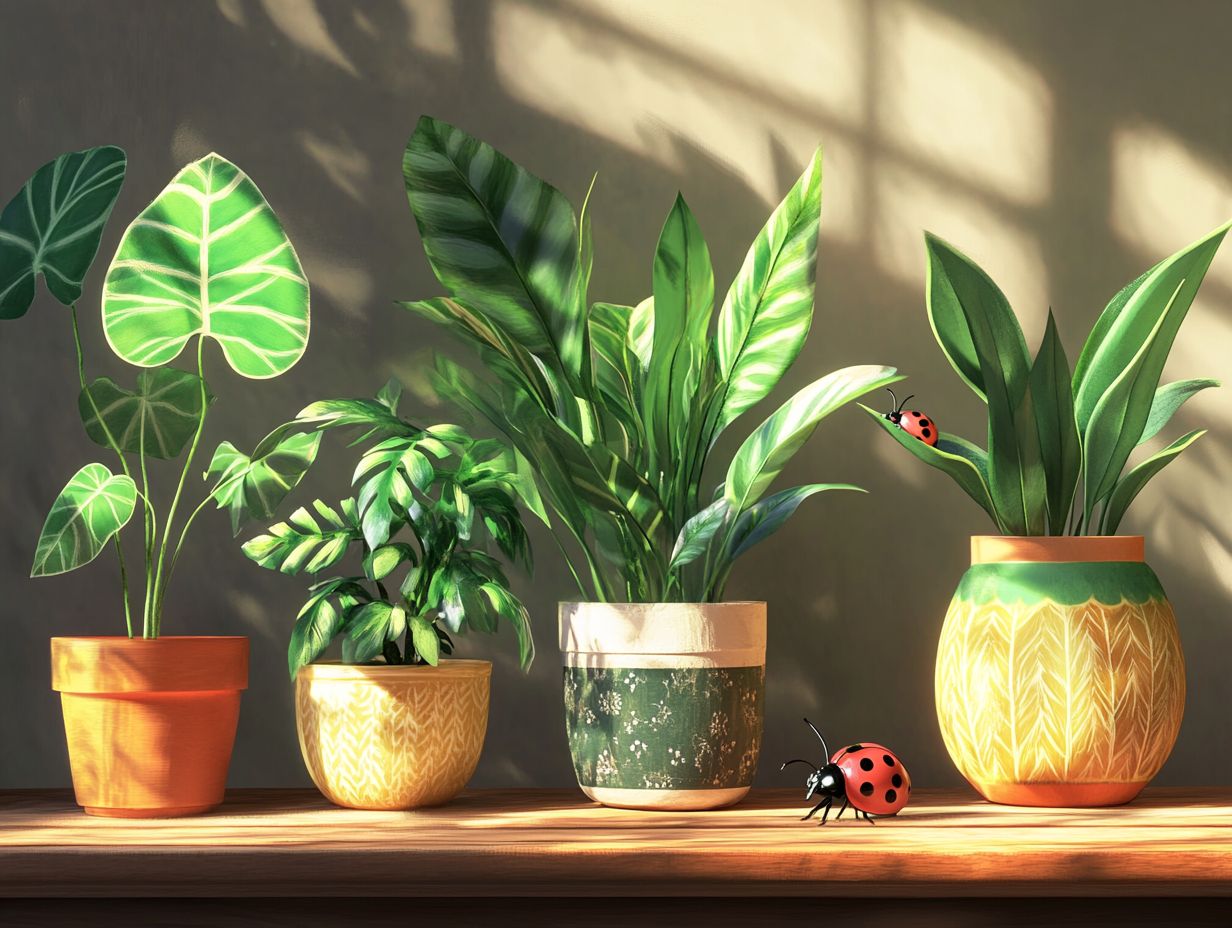
- Incorporating basil, dill, marigolds, lavender, and sunflowers into your indoor space attracts beneficial insects that help control pests, while these decorative varieties brighten your home.
- These plants also purify the air and relieve stress.
- Maintaining these plants indoors requires proper light, water, and soil conditions, but can be easily achieved with simple tips.
1. Basil
Basil isn t just a beloved culinary herb; it s also a standout choice for indoor gardening. With its unique patterns and impressive pest-resistant qualities, it s perfect for anyone looking to grow easy-to-care-for plants that enhance home decor and promote a greener lifestyle.
You have a range of basil varieties at your fingertips, including sweet basil, Thai basil, and purple basil. Each type brings its own distinct flavors and aromas, enhancing both your cooking and the aesthetic charm of your space.
For basil to thrive, it craves warm climates and abundant sunlight aim for at least six hours of light daily. Proper watering is crucial; keep the soil moist but never soggy to avoid root rot. Regular pruning promotes bushier growth and amplifies the flavor potency of your basil.
As a non-toxic plant, basil is a safe addition to your home and serves as a natural pest deterrent against nuisances like mosquitoes and flies, making it an excellent option for households with pets.
2. Dill
Dill is an exceptional indoor plant that s easy to cultivate. This low-maintenance herb has aromatic leaves that enhance your cooking and play a vital role in pest control by attracting beneficial insects.
This herb flourishes in humidity levels between 40-60%, making it well-suited for warm and humid spaces like kitchens or sunrooms. Dill thrives in well-draining soil and needs plenty of sunlight about six hours a day will do wonders for its growth.
This resilient plant acts as a natural pest deterrent and elevates the aesthetic appeal of your indoor garden.
For maintenance, regular watering is essential, but be mindful not to overdo it. Beyond repelling pests, dill can enhance a variety of dishes, from sauces to salads, making it an invaluable addition to any home cook s collection.
3. Marigolds
Marigolds are vibrant indoor plants that elevate the aesthetic of your space and double as natural mosquito repellents. They are a favored choice among pest control services and gardening enthusiasts.
These striking flowers come in a delightful range of shades, from deep oranges to bright yellows, each adding unique charm to your gardens and home. Interestingly, marigolds attract beneficial insects like ladybugs and tachinid flies, essential for maintaining a healthy ecosystem by keeping harmful pests at bay.
Caring for these resilient plants is easy; they flourish in well-drained soil and bask in sunny spots, making them perfect for gardeners of all skill levels. By incorporating various types, such as French or African marigolds, along with other indoor plants like common yarrow, you can further enhance the visual appeal and biodiversity of your space.
Don’t miss out on the chance to transform your home! Start your indoor garden today and enjoy all the benefits these amazing plants have to offer.
4. Lavender
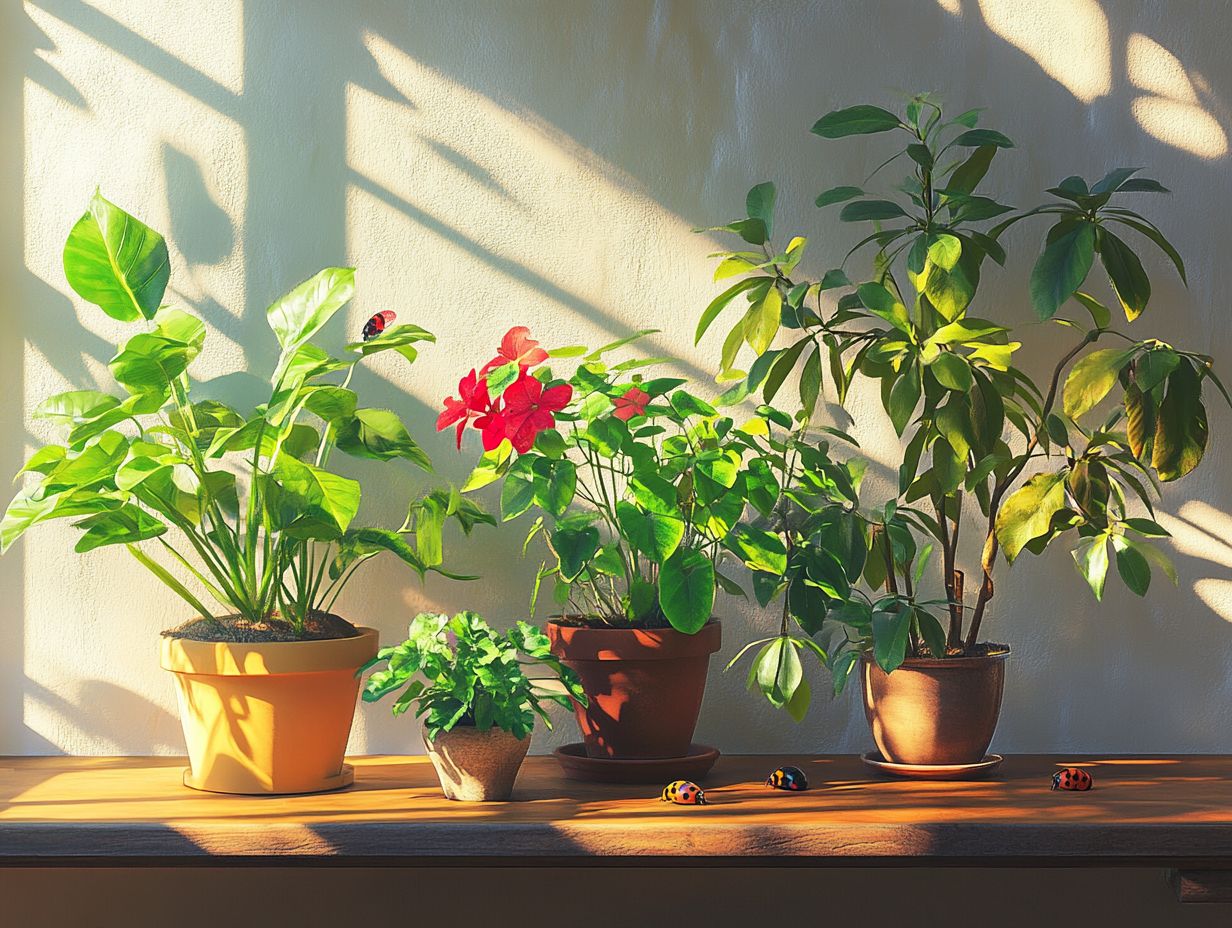
Lavender is the indoor plant you ve been looking for low maintenance, non-toxic to pets, and adaptable to various humidity levels. It s the perfect blend of beauty and practicality for your home gardening endeavors.
With its different species, such as English, French, and Spanish lavender, you can enjoy unique aromatic qualities that elevate the ambiance in any space. The delightful scent does more than just smell good; it soothes and relaxes. It may even enhance your focus and concentration ideal for busy households or home offices.
To keep your lavender thriving and vibrant, make sure to provide well-draining soil and plenty of sunlight. Lavender also repels insects naturally, drawing in beneficial pollinators like bees and butterflies while keeping unwanted pests at bay. For those of you who are eco-conscious, this makes lavender an exceptional choice.
Incorporating these lovely plants can truly transform your indoor environment into a fragrant haven.
5. Sunflowers
Sunflowers, often thought of as outdoor wonders, can actually thrive indoors as easy-to-grow, decorative gems. They effortlessly elevate any space while boasting surprising resistance to common plant ailments.
Watch these vibrant plants thrive with just a bit of care! They adapt splendidly to indoor conditions, flourishing in bright, direct sunlight and requiring just the right amount of moderate watering. Their cheerful, golden faces serve as a captivating focal point in any room, beautifully complementing other houseplants like common yarrow, which has similar care requirements.
Caring for sunflowers involves regular pruning to encourage bushiness. You should also monitor for pests to ensure they remain healthy and delightful companions in your indoor botanical collection.
What Are Beneficial Insects and Why Are They Important?
Beneficial insects are important for your indoor plants, working tirelessly to control pests like aphids and combat plant diseases. By relying on these natural allies, including ladybugs and tachinid flies, you can significantly decrease your need for chemical pest control and foster a balanced ecosystem.
Consider ladybugs and tachinid flies these tiny heroes are instrumental in creating a thriving indoor environment. Ladybugs can devour hundreds of aphids in just one day, making them invaluable partners for those of you seeking organic solutions. Tachinid flies, a type of fly that helps control pests, lay their eggs on or within pest insects, effectively managing populations.
To truly benefit from these allies, it s important to understand their life cycles, as they often rely on specific humidity levels and growing conditions to thrive. By cultivating a welcoming atmosphere complete with the right plants and shelter you can ensure that these beneficial insects flourish, leading to healthier plants and a reduced reliance on synthetic chemicals.
How Do These Plants Attract Beneficial Insects?
Plants like marigolds and lavender are your best friends in the quest for a flourishing indoor garden. Their natural mosquito-repellent properties and vibrant flowers create an inviting atmosphere that enhances both gardening and pest control services.
These plants act as beacons for pollinators like bees and butterflies, as well as beneficial predators such as ladybugs and lacewings. By incorporating the best indoor plants for pest control, you can keep pesky insects in check. The nectar and pollen they produce not only nourish these helpful critters but also foster a balanced ecosystem right within your home.
By adding varieties like basil and rosemary, you can elevate your indoor environment even further. These herbs release aromatic compounds that repel harmful insects while simultaneously attracting the good ones. This delightful symbiotic relationship nurtures a thriving indoor garden, transforming your space into a haven where nature’s protective mechanisms can flourish. To enhance this effect, learn how to encourage beneficial insects indoors.
What Other Benefits Do These Plants Offer?
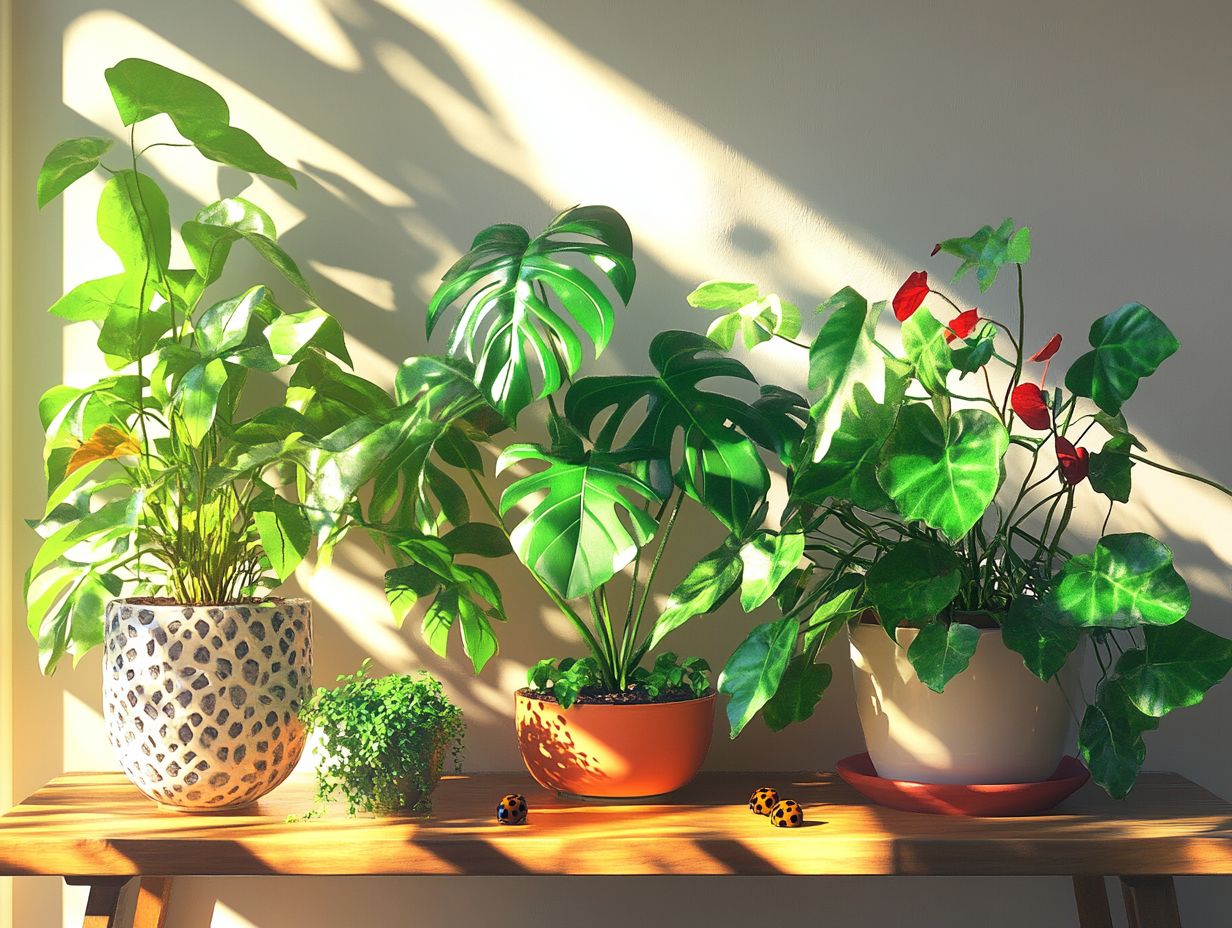
Indoor plants like basil and lavender offer numerous benefits. They include cooking uses, decorative charm, and minimal maintenance.
These plants not only add vibrant colors and delightful fragrances to your space, but they also serve as versatile ingredients in various dishes. They improve air quality by filtering out pollutants and releasing oxygen, creating a more pleasant atmosphere.
These plants combine beauty, usefulness, and health benefits that you will love! They are an exceptional choice for anyone looking to cultivate a healthier living space.
With their low-maintenance needs, they cater to both experienced plant enthusiasts and beginners alike. You can forge a meaningful connection to nature right in your home.
How Can These Plants Be Incorporated into Indoor Spaces?
Incorporating pest-resistant houseplants like basil and marigolds, along with hardy options like Sansevieria and Aglaonema, into your indoor spaces can truly elevate the ambiance. These plants thrive in various humidity levels and require minimal care.
To craft an engaging indoor garden that maximizes both aesthetic appeal and plant vitality, position these resilient beauties near windows to bask in ample natural light. Pairing them with plants that share similar watering needs will enhance the overall visual harmony.
For instance, combining vibrant marigolds with lush ferns or trailing ivy creates an eye-catching layering effect and fosters a healthier ecosystem.
Using decorative pots and varying heights can create a more dynamic display, ensuring the longevity of both the plants and your overall decor.
What Are Some Tips for Maintaining These Plants?
Maintaining indoor plants like dill and lavender requires a keen understanding of their specific needs. These include optimal humidity levels, regular maintenance, and awareness of common plant diseases.
Dill flourishes in well-drained soil and loves abundant sunlight. Ideally, it should soak up six to eight hours of direct light each day. It’s essential to water it consistently, allowing the top inch of soil to dry out between waterings, while ensuring that water does not pool at the base.
Lavender, on the other hand, prefers slightly drier conditions, needing water only when the soil feels dry several inches down. Both of these plants can be vulnerable to pests like aphids and spider mites, so regular inspections and the application of neem oil can fend off these unwelcome visitors.
Watch for yellowing leaves, as they can indicate potential issues with overwatering or root rot. Acting promptly can prevent these problems from escalating and keep your plants in prime condition.
What Are Some Common Misconceptions About Attracting Beneficial Insects?
Many gardeners often fall prey to misconceptions about attracting beneficial insects, mistakenly viewing all insects as pests. In reality, by implementing non-toxic plants, you can create an ecosystem that supports these helpful creatures while enhancing your indoor gardening experience.
Understanding the essential role of these vital insects can profoundly transform your approach to cultivating a flourishing garden. It’s important to recognize that many insects contribute positively to plant health by pollinating flowers and preying on common pests. For those interested in enhancing their gardening practices, exploring creating a pest-friendly indoor garden can be incredibly beneficial.
By incorporating a variety of plants known to attract beneficial insects, you can promote variety within your indoor spaces. This rich diversity not only fosters a more resilient gardening environment but also leads to healthier, more productive plants.
Embracing the right types of insects is essential for nurturing your green spaces effectively.
Frequently Asked Questions
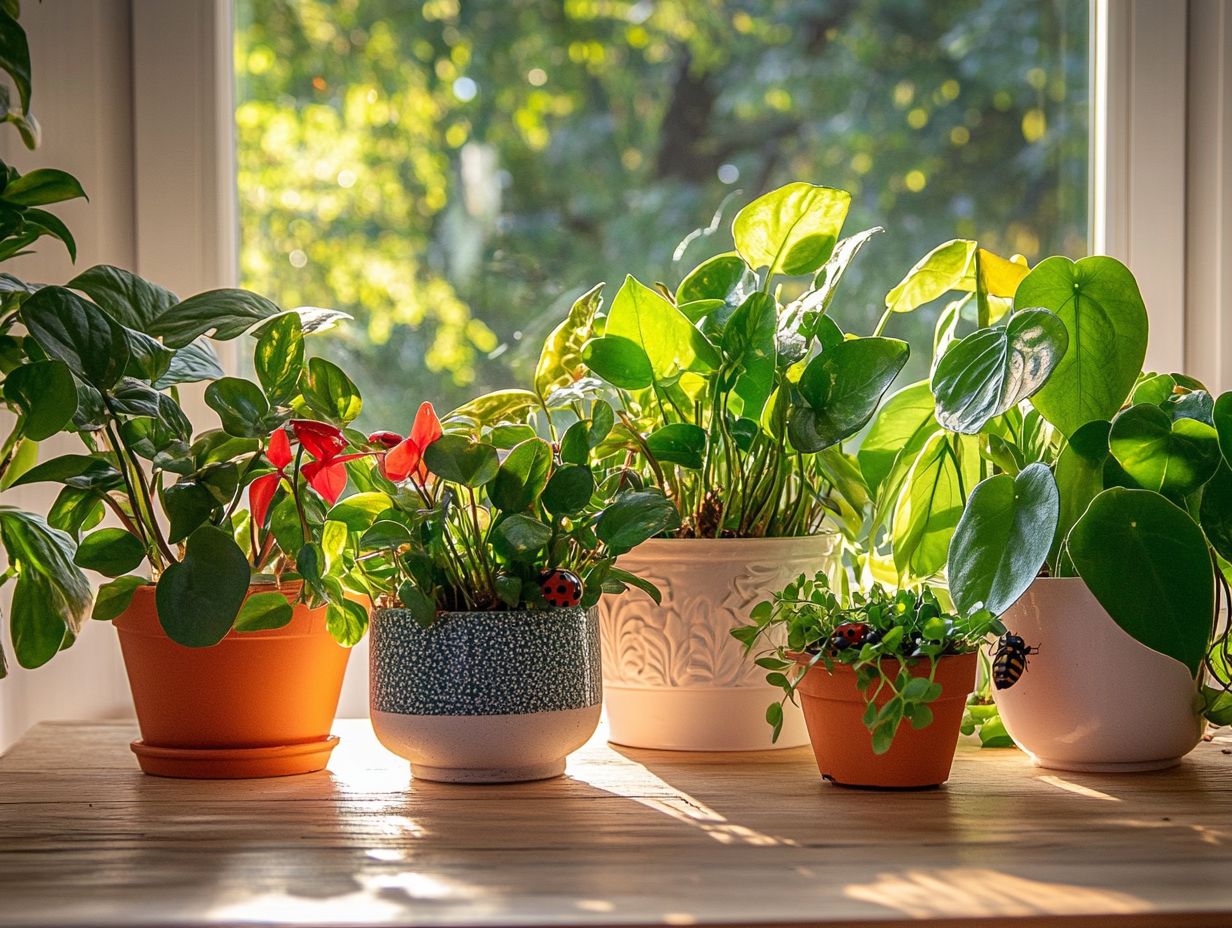
Start your indoor garden today and invite nature into your home!
1. What are some indoor plants that can attract beneficial insects?
Indoor plants like basil, lavender, marigolds, mint, and rosemary attract helpful insects.
2. What type of beneficial insects are attracted to these indoor plants?
These plants can attract ladybugs, lacewings, hoverflies, and parasitic wasps.
3. How do these indoor plants attract beneficial insects?
They release natural smells and oils that draw in beneficial insects. They also provide shelter and food sources for these helpful creatures.
4. Can these indoor plants also repel harmful insects?
Yes! Basil and marigolds have natural properties that keep harmful insects away from your home.
5. Do these indoor plants require any special care to attract beneficial insects?
No special care is needed. Regular watering and proper lighting will help them thrive and attract beneficial insects.
6. Are there any other benefits to having these indoor plants in my home?
These plants improve indoor air quality and add greenery to your space. Plus, you can enjoy fresh herbs for cooking!


